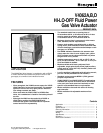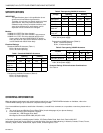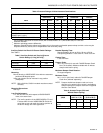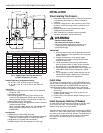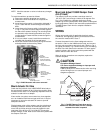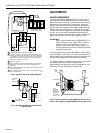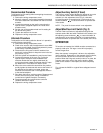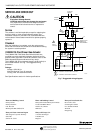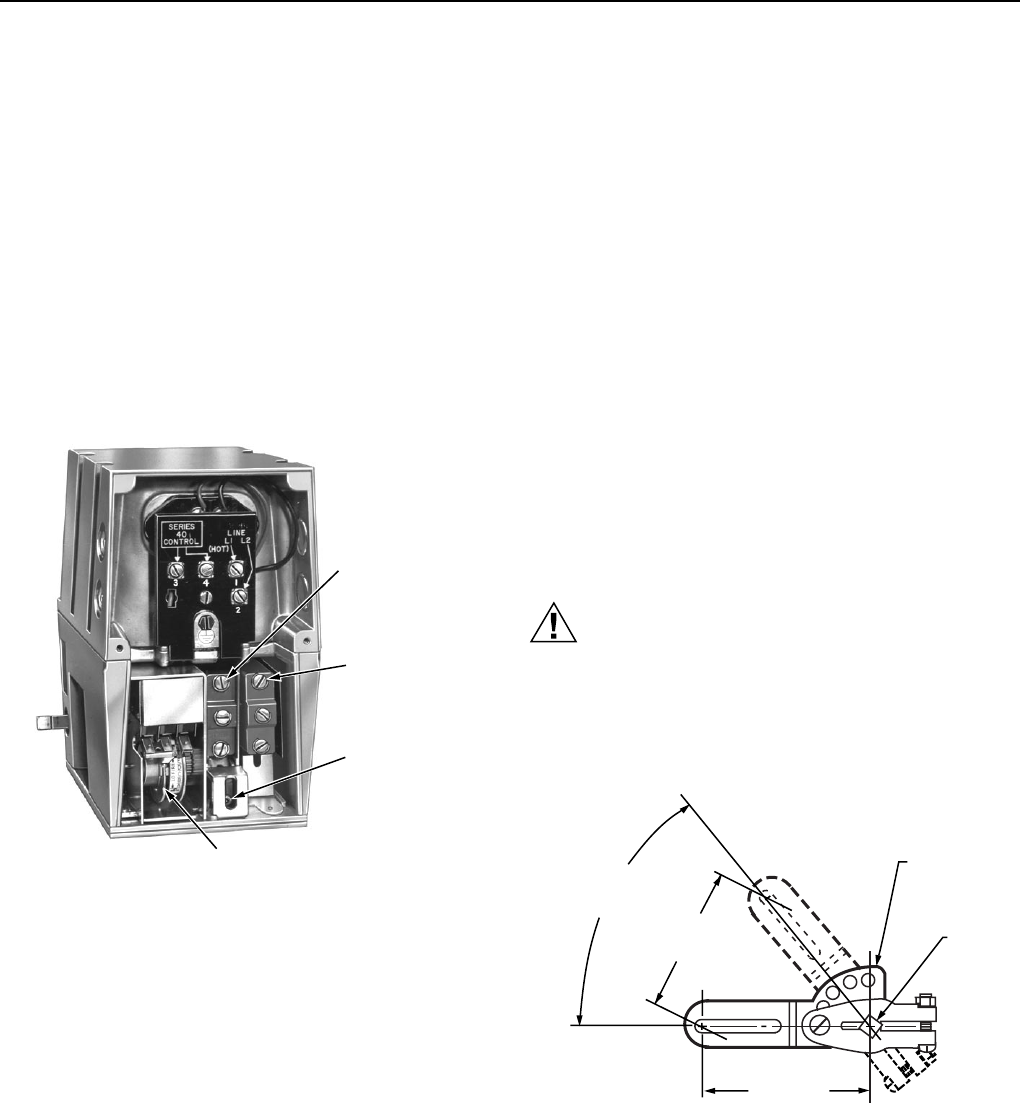
V4062A,B,D HI-LO-OFF FLUID POWER GAS VALVE ACTUATOR
60-2099—85
NOTE: Mark the actuator or valve to indicate any changes
made.
To install the switches, proceed as follows:
1. Remove the actuator faceplate (two screws).
2. Remove the silver-colored barrier to expose the
actuator stem.
3. Insert the auxiliary switch in the position indicated in
Fig. 2. Fasten with two screws through the actuator
base.
4. Insert the proof-of-closure switch in the position shown
in Fig. 2. The proof-of-closure switch mounts against
the side of the actuator housing. The mounting holes
are spaced to allow mounting the switch only in the
correct position. Fasten with two screws through the
actuator base.
5. If only one switch is used, install the narrow barrier
included with the switch in the unused space.
6. Mount the actuator before making wiring connections
and adjustments to the auxiliary switch.
Mount and Adjust 7616BR Damper Crank
Arm (If Used)
The damper crank arm provides a maximum travel of
2-5/16 in. (58.7 mm) through a stroke of 52 degrees. See
Fig. 3. If the V4062 has a damper shaft return spring,
dampers go to the closed position when power is interrupted
by the programmer. Refer to the instructions packed with the
7616BR Damper Crank Arm for complete installation
information.
WIRING
Wiring must comply with all applicable electrical codes,
ordinances, and regulations. Wiring to the actuator and to
the controller must be NEC Class 1.
Connect the power from the flame safeguard control to
terminals 1 and 2 on the V4062 terminal strip, and connect
the firing rate controller to terminals 3 and 4. Refer to Fig. 4
for typical connection. Fig. 5 shows the wiring for connecting
the Max Flow Limit Switch to the actuator. For other typical
system hookups, refer to the instructions packed with the
device used to control the valve.
When all wiring connections are complete, replace the
actuator faceplate.
CAUTION
Equipment Damage Hazard.
Can cause equipment damage or improper and
dangerous operation.
Label all wires prior to disconnection when servicing
valves. Wiring errors can cause improper and
dangerous operation.
133568
AUXILIARY
SWITCH (OR MAX
FLOW LIMIT SWITCH,
FACTORY INSTALLED)
133569
PROOF-OF-
CLOSURE SWITCH
AUXILIARY
SWITCH OR MAX
FLOW LIMIT SWITCH
ADJUSTMENT
SCREW
LOW-FIRE
ADJUSTMENT CAM
M7338A
Fig. 2. V4062 Actuator with cover removed.
Mount Actuator On Valve
Check the final position of the V5055/V5097 Valve body to
be sure that the actuator will be in the proper position when
mounted on the valve. This is especially important when the
actuator is used to drive a damper.
If two smaller size valves are mounted very close together,
as in an Industrial Risk Insurers type valve train, it may be
necessary to mount the actuators off center to provide
adequate clearance.
Slip the bottom collar of the actuator over the valve bonnet
assembly. Rotate the actuator to the desired position and
use a 5/32-inch Allen wrench to securely tighten the two
setscrews (50 to 60 lb-in. [5.7 to 6.8 N•m]). Connect the
damper linkage, if used. Refer to the instructions packed with
the damper crank arm.
Fig. 3. 7616BR Damper Crank Arm can be
attached to actuator shaft to drive a damper
at same time valve is opened.
52 DEGREE
ANGULAR
ROTATION
MAXIMUM
TRAVEL
SHAFT
7616BR
DAMPER
ARM
M7322
RADIUS
2-11/16 (68.3)
2-5/16 (58.7)



